Skip the strong, artificial scents and chemicals in store-bought alternatives by using these DIY, natural fabric softeners that are inexpensive, easy to use, and non-toxic.
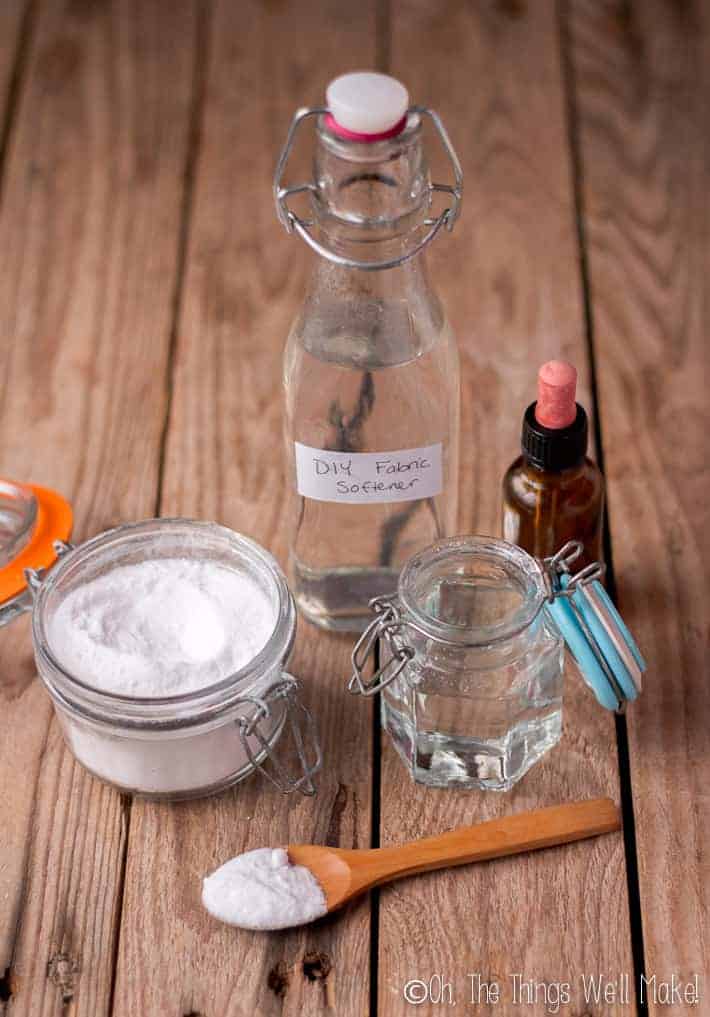
Using wool dryer balls to soften your clothes
A couple of years ago, I showed you how to make wool dryer balls as a natural alternative to commercial dryer sheets. Wool dryer balls are great for throwing in the dryer with your clothes because they can help speed up drying time as well as help soften the clothes. Since I use an unscented homemade laundry detergent, I love to add a couple of drops of essential oils to the balls before throwing them in the dryer to give my clothes a very subtle, natural scent.
(When I first wrote this post I was still using a soap-based homemade laundry “detergent” instead of my new surfactant based one. Also, I should add that I have since been informed that there is a risk, albeit small, of EO’s igniting in the dryer when used in dryer balls. When used in such small amounts, it’s highly unlikely, but do so at your own risk! It may be better to scent your clothes with homemade lavender sachets in your closet instead!)
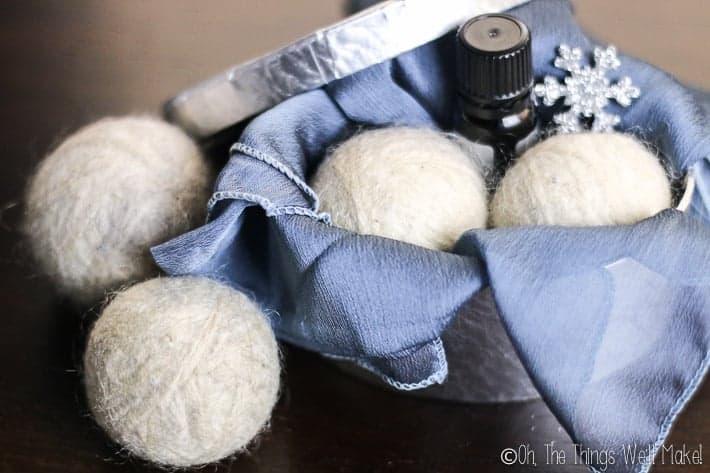
While wool dryer balls are a great green alternative to commercial dryer sheets, an even greener alternative is to line dry your clothes, of course. Obviously, if you line-dry your clothing, you can’t really soften it with wool dryer balls.
I stopped using commercial fabric softener years ago. Not only do I find their strong, artificial scents overwhelming and nauseating, but I also was told by some of my local friends that commercial fabric softeners are responsible for eating away at the elastic on clothes. When I thought back to how long my swimsuits used to last me, and then how quickly they were wearing out once I had moved here (aka. when I started using fabric softener), I just stopped using it cold turkey. I mean, I really only had begun in the first place because I followed what everybody else was doing in this region with hard water.
Do you really need to use fabric softener?
Fabric softeners aren’t necessary, but they can leave your clothes feeling softer. This is especially true for places with hard water. While I personally hate the scent of fabric softeners (and I actually secretly rewash almost everything my mother-in-law washes and gives back to me because I can’t stand the fragrance), some people use fabric softeners because they love the way it makes their clothes smell.
To be honest, I didn’t notice a huge difference in my clothes after ditching the fabric softener, other than the fact that they no longer reeked of chemicals. That said, I made the change at around the same time as we moved to a new house, which meant it was same time that I started drying my clothes in the dryer again (with my wool dryer balls). Up until that point, I had been living in an apartment and drying my clothes on a clothesline. Clothes dried in that way have a tendency to feel a bit crunchier than those dried in the dryer.
For those that do line dry, and I applaud you 100%. Luckily for you, there are easy, inexpensive natural fabric softeners that you can use to help soften your laundry without all of the toxic chemicals. Even if you use a dryer with dryer balls, I’m sure there are times that these natural fabric softeners can come in handy.
So far, I’ve only tried using vinegar in the final rinse, but from what I’ve been reading, the other ideas here also work really well. Baking soda has the extra benefit of helping whiten clothes, and helping to remove odors.
You can use these natural fabric softeners alone, or combine them. I personally wouldn’t combine vinegar (an acid) with baking soda (a base) because they would probably cancel each other out. On the other hand, vinegar and glycerin combined could make a great liquid softener, and salt and baking soda together would probably make a great powder one. If I do get around to trying them out together, I’ll try to remember to update this post with my findings.
Why choose natural fabric softeners?
Commercial fabric softeners include a number of ingredients that are potentially damaging to our health and that can pose a risk to the environment.
The fragrances themselves can be comprised of a number of questionable ingredients. They can aggravate asthma in some people and can make others, like me, feel dizzy when around them. They can also irritate the skin of those with atopic dermatitis and other skin conditions. (That’s the case with my son, and it’s why I avoid using detergents and softeners with artificial fragrances.)
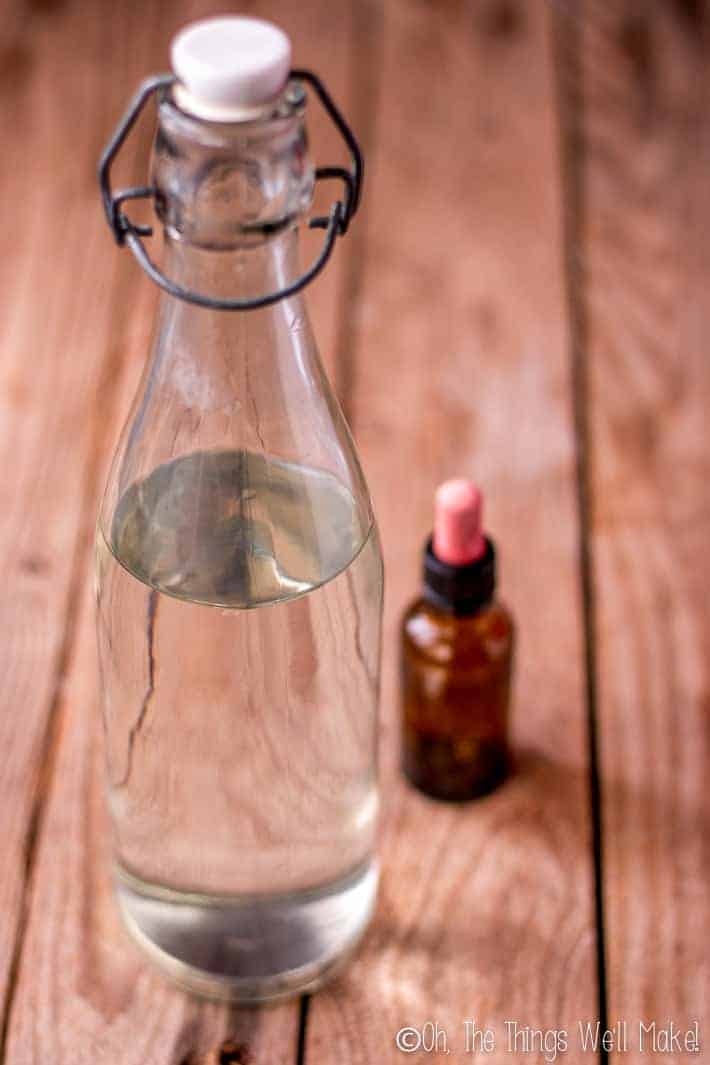
White Vinegar as a Fabric Softener
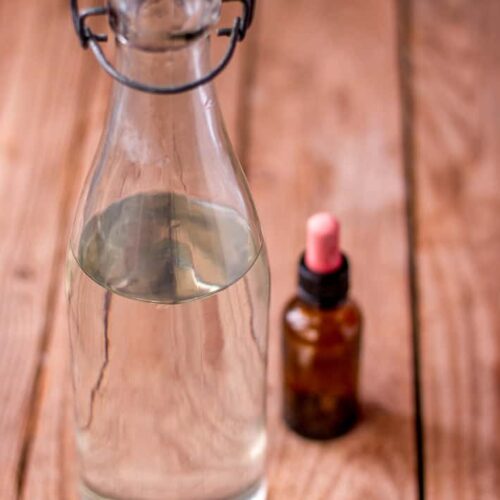
White Vinegar as a Fabric Softener
Materials
- 1 gallon white vinegar
- 30 drops essential oil optional- for scent
Instructions
- Mix together the vinegar and essential oils of your choice. You can choose essential oils whose fragrance you like or can choose to use disinfecting essential oils.
- Pour the vinegar directly in your washing machine’s softener dispenser. You can use between 1/4 and 1/2 cup of vinegar in the final rinse of each load of laundry, dependent upon the size of the load and the hardness of your water.
Baking Soda as a Fabric Softener
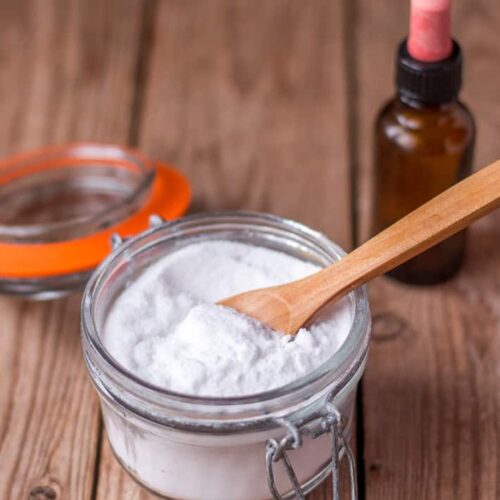
Baking soda Fabric Softener
Materials
- 2 cups baking soda
- 15 drops essential oil optional
Instructions
- Mix together the baking soda and an essential oil of your choice. (The essential oils will help add fragrance and are optional.)
- Add 1/2 cup of the mixture (or just baking soda) to your washing machine during its rinse cycle.
Salt as a Natural Fabric Softener
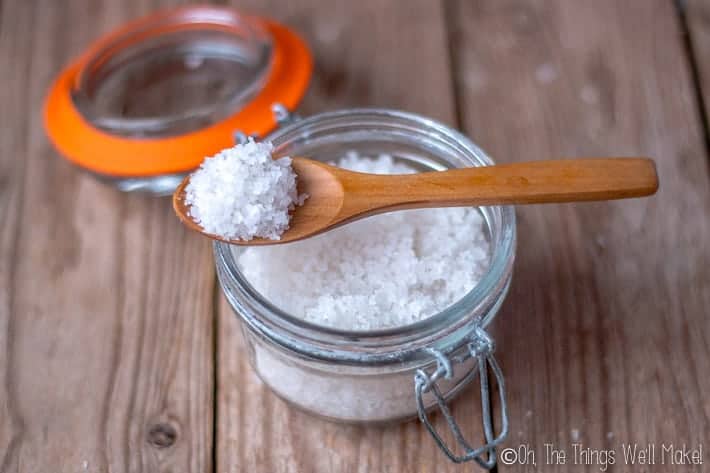
Salt Based Fabric Softener Crystals
Materials
- 4 cups salt
- 30 drops essential oil(s) optional
Instructions
- Mix the two ingredients together in a jar.
- Add around 1/2 cup of the salt mixture to your laundry. You can either add it with your detergent (allowing you to add vinegar to the rinse cycle), or you can add it during the final rinse.
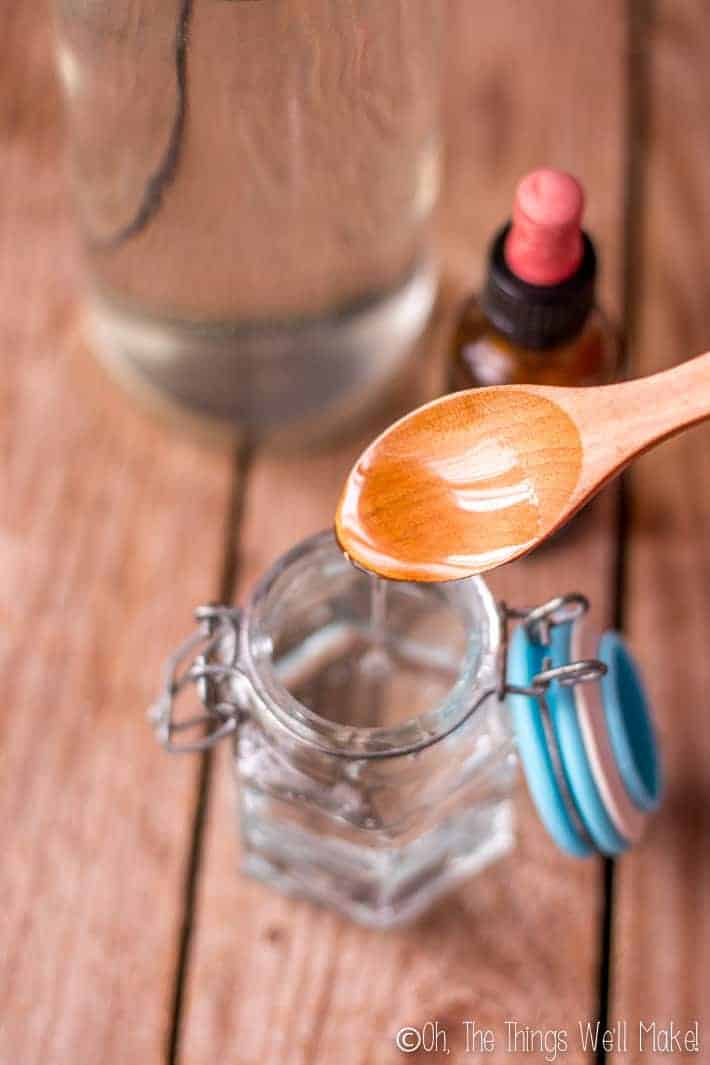
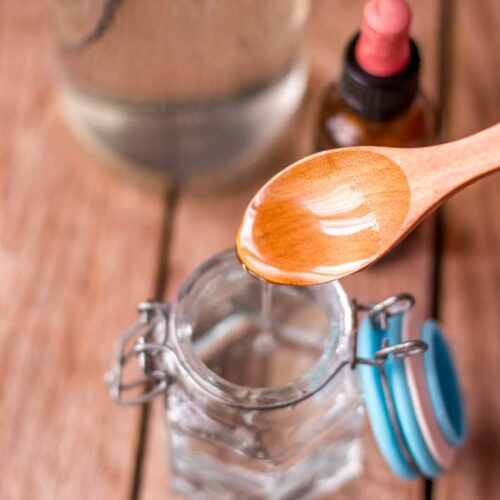
Vegetable Glycerin Fabric softener
Materials
- 1 gallon distilled water
- 1/2 cup glycerin
- 30 drops essential oil optional
Instructions
- Pour the glycerin into a gallon bottle. Fill the rest of the bottle with distilled water. Shake the bottle to mix the ingredients well.
- For a softer, chemical-free laundry, pour half a cup of the mixture into your washing machine during its rinse cycle.
 Español
Español
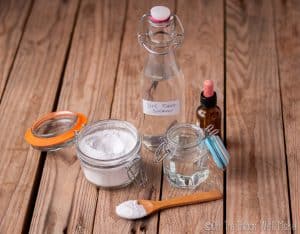
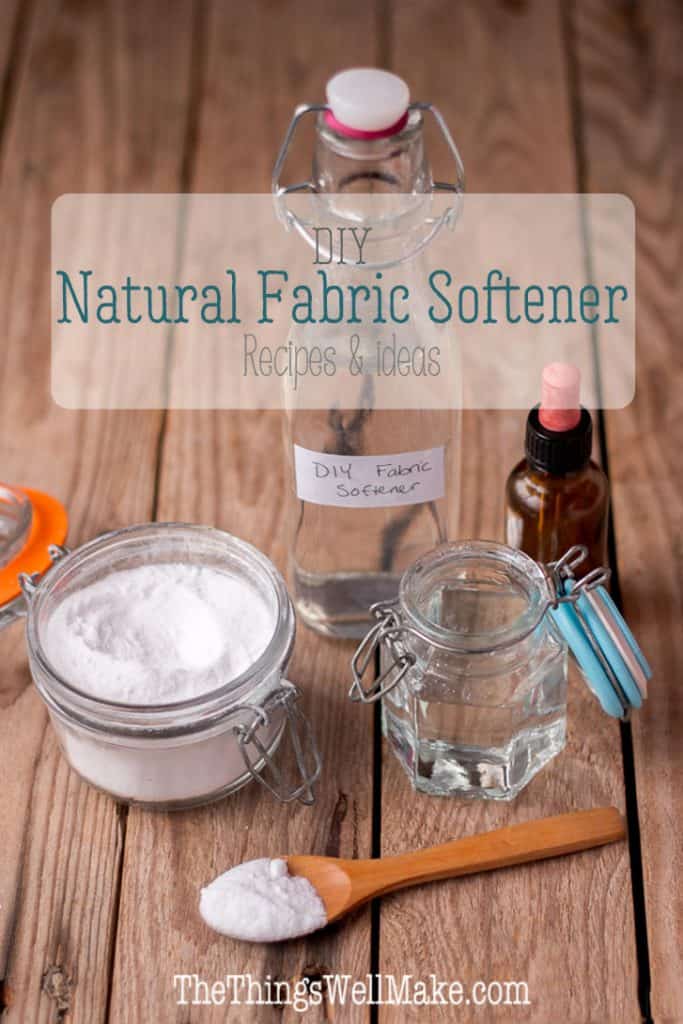
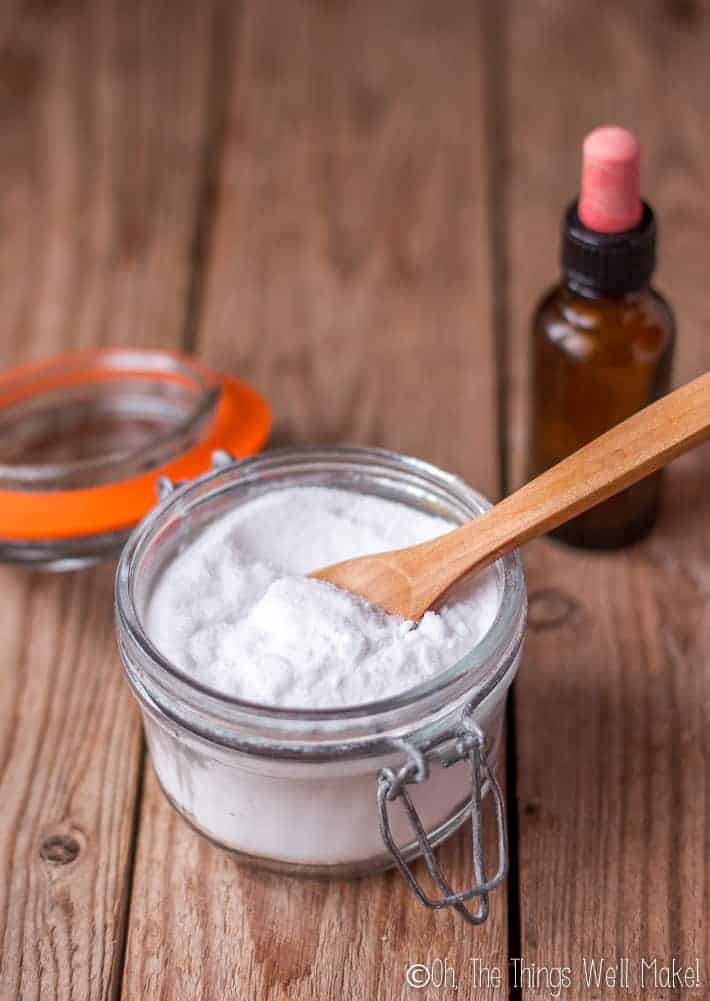
 Easy, Homemade Fermented Ketchup: Fermented Foods at Every Meal
Easy, Homemade Fermented Ketchup: Fermented Foods at Every Meal
Natalie
Hi, quick question – with the distilled water and glycerin recipe – would you need to use a preservative? As one is not added in the recipe? Or is the preservative in the detergent enough? Thank you 🙂
Natalie
Oh sorry – don’t worry read reply below and you said “no you don’t” oops sorry! Should have read that first! 🙈 great recipes thank you 😊
Tracy Ariza, DDS
Hi Natalie,
This post was originally
a guest post given to me by a cleaning place. When I updated the post, I couldn’t get a hold of the weiter anymore, so I couldn’t ask any questions and I ended up rewriting the post and removing all of her information. Looking over things now, though, I’d actually suggest using a lot less water in that recipe. Glycerin, when used at a high enough concentration, works well as a preservative itself. That said, the percentage of glycerin needs to be high enough. If too much water is added, it may no longer be a self-preserving mixture. I’d suggest keeping the mixture at least 40-50% glycerin. You can then use smaller amounts as a softener and you won’t need as much space to store it.
Thanks for that catch. I will seriously consider updating this post when I get home from my vacation.
Beth Taylor
Mixing vinegar with baking soda is more of a 5th grade science experiment than a laundry help. It’s great for cleaning drains and such. Not sure if it would be good for fabrics.
Tracy Ariza, DDS
I specifically wrote that I wouldn’t suggest mixing those two together as they would cancel each other out.
Laura
When making the glycerine fabric softener, do I need a preservative?? If so, what do you recommend?? Also, I’ve been taking the Ice Cream salt crystals , Mixing my essential oil/Scented oil with Polysorbate 20, then I mix it with vegetable glycerine. Smells wonderful, disperses well in the wash> you can use it in the wash cycle or in the rinse cycle. THere is no water in that recipe, so I don’t need a preservative. I think??
Tracy Ariza, DDS
Hi Laura,
No, with glycerin, there is no need to use a preservative!
Holly
Tracy, thank you so much for sharing all of these fantastic recipes!
I have been trying to reduce the chemical load in our home more and more lately. A friend of mine brought to my attention the idea of making our own laundry detergent, softeners, etc.
I love the idea of using just vinegar, but our extremely hard water causes the clothes to still feel stiff. (I’ve been a long time Downy addict). I’m trying the hair conditioner and vinegar method today. Although I worry about the chemicals still present in the conditioner. (Even with the ‘natural’ choice I bought)
Has anyone you know tried the glycerin method with great results? I’m curious if that would finally be the solution to my hard water laundry woes. ?
Sending blessings to you and yours. Thanks for sharing such a helpful post! ♥️
Tracy Ariza, DDS
Hi Holly,
Thank you!
I still haven’t tried it personally, but maybe someone can chime in. I hope you find something that works for you. (I’m going to be updating my conditioner recipe soon, so maybe you can use something from there.) 😉
Peter
I came across your website while checking to see what is happening on the home-made detergent front and noticed that the Salt Based Fabric Softener above recommends NaOH, although this is a salt, it is not the salt you mean. This is actually sodium hydroxide, also known as caustic soda. Really not recommended as a fabric softener, more recommended for clearing out blocked drains. I suggest you change the salt to NaCl, which is sodium chloride, the main salt in sea salt and Himalayan salt.
Cheers.
Tracy Ariza, DDS
Hi Peter,
Yes, I’m sorry about that. I’m so used to writing NaOH for the lye for all of my soap recipes, that I guess I wrote it out of habit. I have since changed it. 😉
Melanie
Hi there,
When you talk about using salt as a softener and say ‘other NaOH salts’ do you mean NaCl salts? I’m a bit confused otherwise, but maybe I’m misremembering chemical symbols from school – it’s been a while! Isn’t NaOH sodium hydroxide though??
Thanks for all the amazing information and recipes you share Tracy.
Melanie
Tracy Ariza, DDS
Hi Melanie,
Yes, of course!
With all of my soap recipes, I’m used to writing NaOH all of the time to distinguish the different types of lye. (NaOH, sodium hydroxide, is used for bar soaps and KOH, potassium hydroxide, for liquid soaps.)
I guess out of habit, I wrote it yet again. Oops!
Fixed now- thanks for the heads up!
sarah
Hi Tracy, I have read that fabric softener with hair conditioner can be made, could the conditioner work with btms and glycerin? and do not put oil, but what could be added? What do you advise?
Thank you..
Tracy Ariza
Hi Sarah,
I’ve never tried it, but I imagine that would work.
You could probably make it as is with the oil as most conditioners also have oils. I’d think that with the emulsification, it wouldn’t actually stain anything.
That said, you can totally leave the oil out of the conditioner too. I’ve used only BTMS with water before and no problem!
Cristina
Thanks for sharing all this cool things we can do at home. My questios is if the fabric softener made with vinegar doesnt smell too much. I just cleaned my kitchen with vinegar and the smell was awful!!! Thanks
Tracy Ariza
Hi Cristina,
I haven’t noticed any lingering vinegar scent once the clothes are dry!
I know what you mean about using it in a spray. It’s not my favorite either. 😉
Leatha R.
I have just read that vinegar can harm the rubber parts of your washing machine, (especially if it is a front loading washer). I have used it for a while now,… so I will be switching to glycerine and distilled water. FYI Thanks.
Jason
you saved me a lot of time, thanks for sharing the useful information.
Tracy Ariza
I’m happy to have helped!
Dianne
Can all these be used with cold water wash? I don’t have hot water going into my washing machine. We are also on an eco septic tank so are they all worm friendly?
Tracy Ariza
Hi Dianne,
I don’t see any problem with the cold water. I wasn’t sure about the worms, though, and meant to look it up- but I completely forgot and almost didn’t answer you!
I’m not sure about the worms because while these are environmentally friendly, coming into contact with a very high or low pH probably isn’t in their best interest. I would think, though, that unless you had the water run off directly to the area where you have worms for compost or something, that it wouldn’t be enough to be a problem.
That’s just my best guess, though. I’m not completely sure.